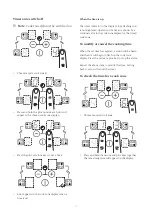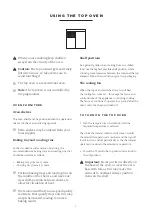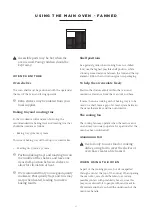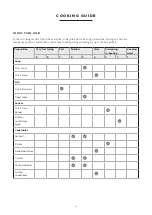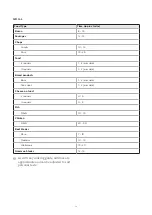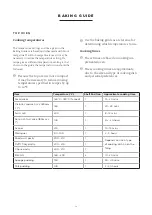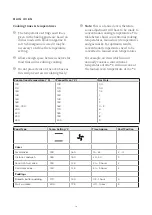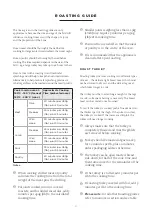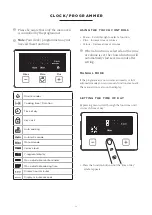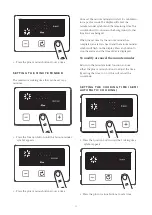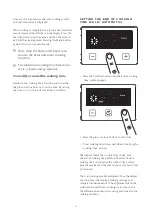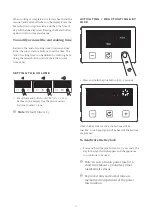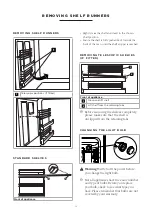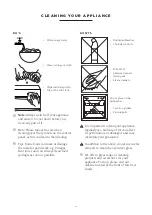
31
Food Type
Temp. Setting °C
Time Approx.
Shelf Position
Miscellaneous
Yorkshire pudding:
-
large
220
200
40 - 48
4 - 5
-
small
220
200
15 - 20
4 - 5
Shortcrust pastry
200
180
depends on filling
4 - 5
G E N E R A L B A K I N G G U I D E
Traditional fruit cakes
It should be remembered that ovens can vary over
time, therefore cooking times can vary, making it
difficult to be precise when baking fruit cakes.
It is necessary therefore, to test the cake before
removal from the oven. Use a fine warmed skewer
inserted into the centre of the cake. If the skewer
comes out clean, then the cake is cooked.
4
Follow the temperatures suggested in the
recipe and then adjust accordingly to the
conversion table.
4
Do not attempt to make Christmas cakes
larger than the oven can cope with, you
should allow at least 25mm (1”) space
between the oven walls and the tin.
4
Always follow the temperatures
recommended in the recipe.
4
To protect a very rich fruit cake during
cooking, tie 2 layers of brown paper
around the tin.
4
We recommend that the cake tin is not
stood on layers of brown paper, as this
can hinder effective circulation of air.
4
Do not use soft tub margarine for rich
fruit cakes, unless specified in the recipe.
4
Always use the correct size and shape of
tin for the recipe quantities.
Trouble-shooting - fruit cakes
Problem
Possible Cause
Fruit sinking to
the bottom
Low oven temperature which
may cause the cake to take
longer to set, allowing the
fruit to sink. Or, too much
liquid, or raising agent. The
fruit may not have been
properly washed and dried.
Cake sinking /
dipping in the
centre
Too much raising agent in
the mixture. Too hot, or
too cool an oven. Or, not
enough liquid or insufficient
creaming.
Surface cracks
Too small a tin, or too much
mixture in the tin. Too much
raising agent in the mix,
plus not enough liquid or
insufficient creaming. The
oven may be too hot.
Hard outer
crust with a
damp patch
inside
Oven too hot, therefore the
cake baked too quickly. Too
much sugar, or insufficient
liquid.
Burnt outside
Oven temperature too high.
Oven too small for the size of
cake. Insufficient protection
around the tin. Cake baked
on too high a shelf.
Texture with
pronounced
holes.
Too much raising agent. Flour
unevenly mixed.
Summary of Contents for KENSINGTON
Page 1: ...GOURMET KENSINGTON User manual EI 90 cm...
Page 41: ...41...
Page 42: ...42...
Page 43: ...43...

